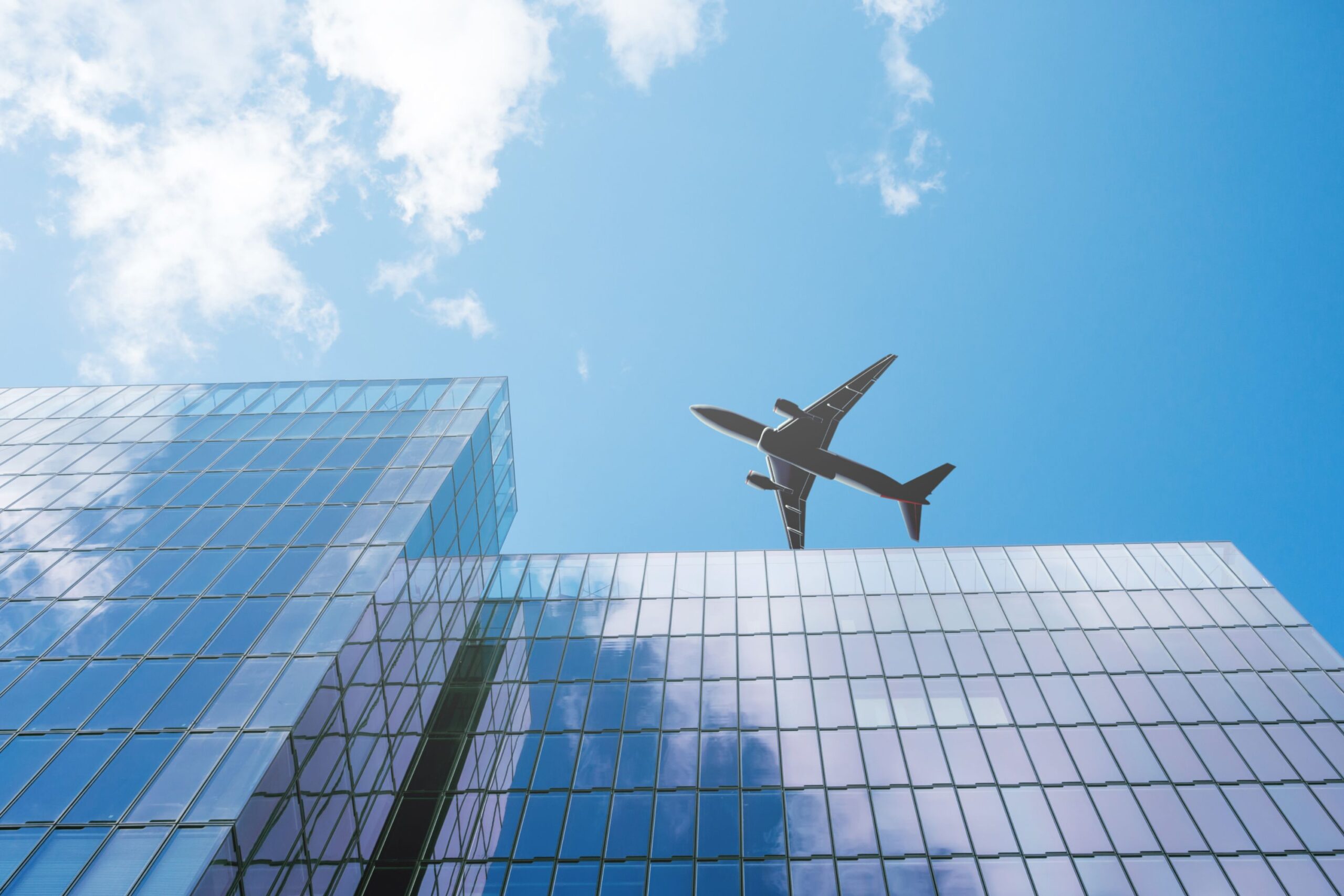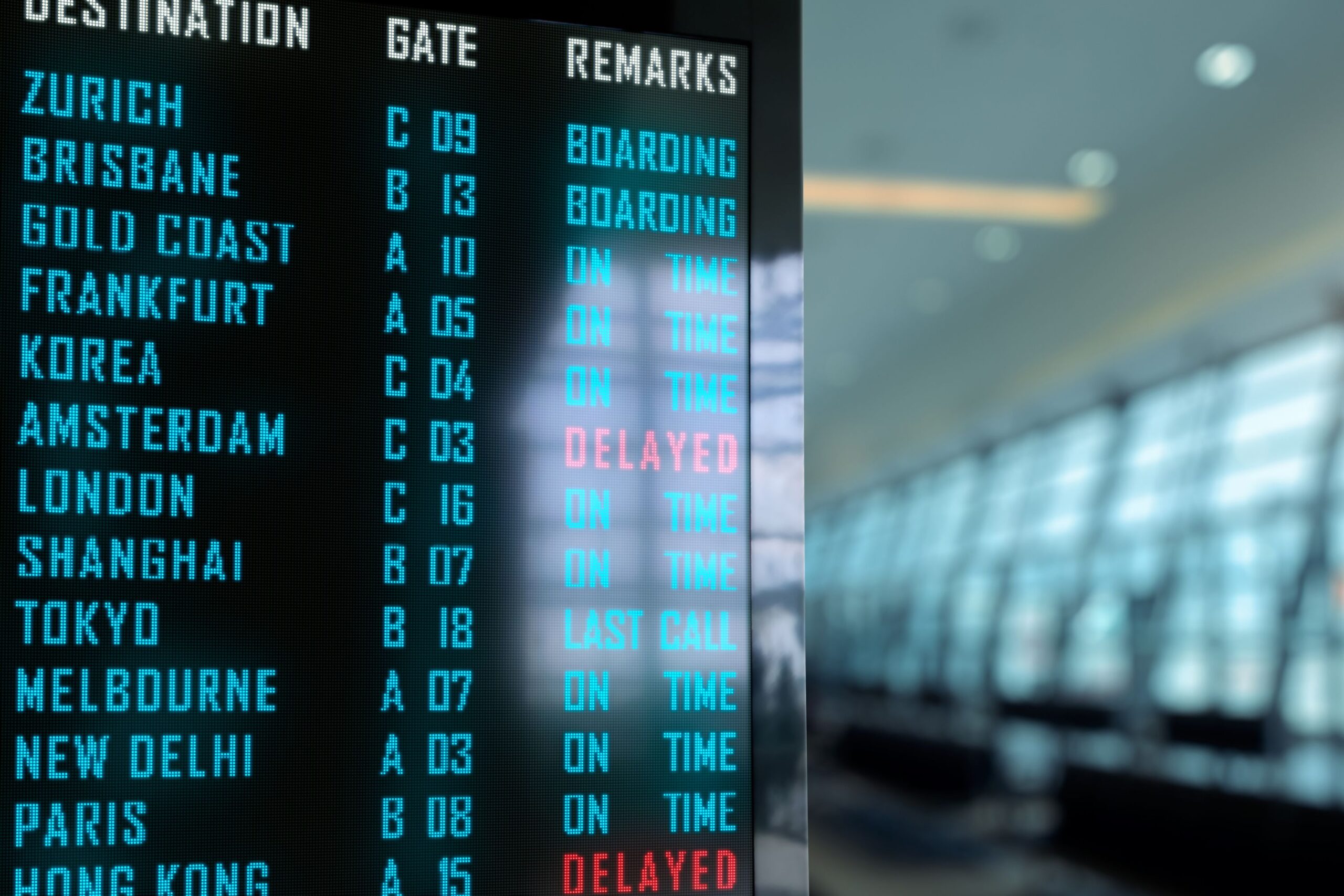If you’ve ever booked a flight online and suddenly received a ping on your phone about a gate change or delay, you’ve already experienced the benefit of flight push notifications. But what are push notifications for flights exactly, and why do they make such a difference when planning or taking a trip? Let’s break it down in plain, simple terms.
What are Push Notifications for Flights and Why They Matter
Push notifications for flights are real-time alerts that pop up on your smartphone or tablet to keep you updated about your flight details. These notifications can come from the airline app, a travel booking platform, or a flight tracking service. When they’re set up right, they help you stay ahead of schedule changes, boarding times, gate updates, cancellations, and sometimes even security wait times.
Why Real-Time Flight Updates Make Travel Easier
Travel can be unpredictable. A gate might change minutes before boarding. A delay might appear out of nowhere. You might miss significant changes relying only on email confirmations or airport display boards. That’s where flight push notifications come in handy.
If you’d like to know what’s happening without constantly refreshing a webpage or waiting in line at the gate counter, these alerts act like a personal assistant in your pocket. For instance, when your gate is switched from B12 to A4, the app sends you a push notification. You’ll know instantly, and you won’t be caught off guard.
That speed matters, especially in large airports or during tight connections.
What Type of Information Do Flight Push Notifications Include?
Now, not all push alerts are created equally. Some travel apps send too many irrelevant updates, while others filter just the essentials. So, what should you expect when getting well-optimized push notifications for flights?
You might see:
- Your boarding gate and any changes to it
- Flight delay alerts
- Boarding reminders
- Estimated arrival time
- Baggage carousel info after landing
- Check-in reminders
- Last-minute upgrade offers
Suppose your flight was initially scheduled to depart at 4:10 PM, but there’s a delay due to incoming weather. Instead of sitting at the gate for an hour, you’ll get a push notification telling you the new estimated departure time. You can grab a snack or relax somewhere more comfortable, without missing essential updates.
Do You Need to Download an App to Get Flight Push Notifications?
In most cases, yes. You must download your airline’s official mobile app or a trusted flight tracking app to receive push notifications. After booking your flight ticket online, installing the app linked to your reservation is the next smart step.
If you’ve booked through a third-party site like Expedia or Skyscanner, those platforms offer push alerts through their apps. But remember that airline apps are the most accurate since they pull info straight from the source.
Once you install the app and enable notifications, your phone will receive alerts as your trip approaches. This setup only takes a few seconds and saves you much stress later.
Should You Use Push Notifications for Every Flight?
If you travel often, it’s smart to integrate push notifications into your regular travel setup. Even if you only fly occasionally, activating push notifications for flights is one of the simplest ways to avoid unpleasant surprises.
Airports can be chaotic during busy travel periods, like holidays or summer vacation. Information on screens gets delayed. By turning on flight alerts, you’re skipping the guesswork and getting real-time updates straight to your device.
For those who connect through major hubs like Heathrow, JFK, or Frankfurt, where gate changes are frequent and time is limited, these alerts can mean the difference between catching or missing your next flight.
How to Set Up Push Notifications After Booking Your Flight
Once you’ve booked your ticket, the next step is simple: download the app to keep you informed. If you booked directly with an airline, start with their app. Most of them—like Delta, Lufthansa, Emirates, or Ryanair—prompt you to log in or enter your booking reference. Once that’s done, you’ll see the option to “track flight” or “enable notifications.”
Check your confirmation email if you booked through a travel agency or booking website. It usually contains a link to track your trip or download an app with your itinerary. You’ll still be able to receive push notifications for flights as long as you’re logged in and allow the app to send alerts.
What you need to do:
- Allow the app to send push notifications when prompted
- Enable flight alerts in your settings
- Double-check that your itinerary is saved in the app or synced with your email
It only takes a minute, but the peace of mind lasts the entire trip.
SMS Flight Alerts vs. Push Notifications
Some travelers still receive flight updates by text message. While SMS alerts work, they usually offer limited information and can’t be customized. Push notifications, on the other hand, are more dynamic. They include icons, real-time refreshes, and direct links to your mobile boarding pass or seat upgrade options.
Push notifications for flights are also smarter. You might get an alert that tells you about a delay, suggests checking in again, or offers options to rebook through the app. That kind of support doesn’t happen with text messages.
So, if you’re wondering which one is better, push notifications are far more efficient if you have a smartphone and internet access. They’re faster, richer in detail, and easier to manage.
Can You Customize What You’re Notified About?
Absolutely. Most airline and travel apps let you choose what kind of alerts you want to receive. This helps prevent notification overload, especially if you fly frequently or manage multiple bookings.
What you can usually control:
- Only receive alerts for your active flight
- Mute updates after boarding
- Opt into upgrade or standby alerts
- Get luggage carousel info after arrival
For example, if you prefer peace during your trip but still want to know if your flight is delayed, you can switch off other notifications and only keep the delay alerts active. It’s all about what makes your travel experience smoother, not more overwhelming.
Will Push Notifications Drain Your Battery or Use Data?
This is a common concern, but the impact is usually minimal. Push notifications for flights don’t constantly ping the server; they activate only when something changes in your flight status. Most apps today are optimized to use very little data and battery, especially if you’re not actively using the app.
However, if you’re traveling internationally and don’t have a data plan, it’s better to connect to Wi-Fi when possible. You’ll continue receiving flight notifications without racking up roaming charges.
What you can do is:
- Keep battery saver mode on
- Use airport Wi-Fi for updates
- Turn off unnecessary app notifications and keep flight ones enabled
Tips for Getting the Most Out of Flight Push Alerts
If you plan to rely on push notifications, a few small things can help you get the best results.
First, ensure your flight information is accurate and complete in the app. The app might not find your itinerary if your name is misspelled or your booking code is wrong.
Second, keep the app updated. Travel apps are constantly improving how they send alerts, and older versions might not function well.
Finally, always double-check the source. If you’re getting notifications from multiple apps—like your airline and a third-party booking platform—pick one to avoid mixed signals. Having two apps alert you with slightly different information can be confusing when you’re already at the airport.
Apps That Send Push Notifications for Flights
There’s no shortage of options for apps that offer flight notifications. The one you use will depend on how you booked and which features you want. Some are better for real-time updates, while others provide extras like seat tracking or rebooking tools.
Their app is your best bet if you book directly through your airline. Airlines like United, Turkish Airlines, and JetBlue have push notifications built into their apps. These alerts are often the most reliable because they’re updated by the airline itself.
But what if you booked through a travel website or aggregator? Apps like TripIt, Kayak, Hopper, and Skyscanner also offer flight alerts—even if you didn’t book with them. All you need to do is forward your itinerary to their system or connect your email, and they’ll track your flights in the background. Once you’re set up, these apps will ping your phone with any updates related to your flight.
Each of these apps has its strengths. Some focus on pricing alerts before booking, while others help after you’ve already paid. If you’re only looking for flight status updates, you’ll get what you need from an airline app or a reliable third-party tracker.
Why Push Notifications Are Crucial During Disruptions
Delays, cancellations, or gate changes can easily ruin a smooth travel plan, especially if you’re on a tight schedule or have a connecting flight. That’s when push notifications for flights become more than just functional—they become essential.
Imagine arriving at the airport only to learn your connecting flight is delayed by three hours. If you had push notifications enabled, you’d already know. You could have adjusted your plan earlier, grabbed a meal, or asked about switching to a different route. That information, delivered on time, lets you control your trip.
During airline strikes, storms, or mechanical delays, push notifications can even include rebooking suggestions or vouchers. Some apps will direct you to speak with a customer service agent in-app or offer links to change your flight without standing in a queue at the airport.
When travel goes sideways, the informed travelers have the upper hand.
How Flight Tracking Tools Work with Push Notifications
Flight tracking tools take push alerts to another level. These tools connect directly with airline systems and data sources that monitor aircraft in real time. They use that information to alert you of changes before they show up on the departure board.
Apps like FlightAware, FlightRadar24, and App in the Air are popular among travel enthusiasts for a reason. They don’t just give you updates—they show you where your aircraft is, how early or late it’s running, and what’s happening at your arrival gate.
Let’s say your flight is showing “on time” in the airport app. But a tracking app notices that your inbound aircraft is arriving late. That means a delay is coming—even if the airline hasn’t officially announced it yet. Push notifications will let you know when it’s confirmed, giving you more time to adapt.
You’re no longer guessing when you combine these tools with push notifications. You’re planning.
Why Frequent Flyers and Travel Agents Rely on These Alerts
If you fly often, you already know how chaotic things can get, especially when navigating international terminals or managing multiple bookings. That’s why experienced travelers always turn on push notifications for flights.
Travel agents use them to monitor changes for clients in real time. If a flight gets delayed, they know immediately and can take action, often before the traveler notices. For business travelers, these alerts save time, prevent missed meetings, and reduce stress.
And if you’re a member of a frequent flyer program trying to earn or use loyalty perks, some notifications will tell you when you’ve hit a new tier or an upgrade is available. That kind of detail helps you make the most of every trip.
For travelers managing tight itineraries, flight alerts are part of their routine, right alongside packing and checking in.
What to Do If You’re Not Receiving Flight Notifications
Sometimes, you’ve done everything right—downloading the app and signing in—and still don’t get alerts. If that happens, the first thing to check is your phone settings. Go to your notification preferences and make sure push notifications are allowed for the travel or airline app you’re using.
If notifications are enabled but nothing’s coming through, open the app and check that your flight is correctly added. Sometimes, notifications won’t trigger if the app can’t match your booking to an active flight. Double-check your booking reference, passenger name, and airline.
Another tip? Make sure the app is updated. Old versions may have bugs that prevent alerts from working correctly. If the problem continues, uninstall and reinstall the app—it often solves the issue fast.
Common Mistakes When Using Flight Alert Apps
One of the most common mistakes travelers make is relying on just one app without confirming the flight is synced. If you use a third-party app like TripIt or Hopper, you must forward your itinerary manually or connect your email inbox. Skipping this step means you won’t receive alerts at all.
Another mistake is ignoring app permissions. If you select “Don’t Allow” when the app first asks to send notifications, you’ll miss every update unless you change your settings later. Some users think adding the flight once is enough. But when flights change, like after rebooking, you’ll need to update the info in the app.
If you manage multiple trips, avoid overloading the app with past flights. Archiving older bookings helps ensure the system only alerts you about what’s relevant.
Are Push Notifications for Flights Safe to Use?
Yes, push notifications are safe, but you should always be cautious with your data. Most airline and travel apps use encryption to protect your information. Still, it’s smart to download apps only from official app stores and avoid logging in through public Wi-Fi without a VPN.
Your travel data, like where you’re flying and when, can be sensitive. So, if an app offers to share your alerts or sync with a social network, skip it unless you’re sure it’s secure. Stick with apps from known brands or airlines that already manage your booking.
Also, watch for suspicious apps pretending to offer flight tracking or alerts. These often ask for unnecessary permissions or redirect you to ad-heavy pages. If unsure, check the app’s reviews and ratings before downloading.
Tailor Push Notifications to Fit Your Travel Style
Push alerts aren’t one-size-fits-all. You can personalize them depending on your trip. If you fly domestically on a short hop, you may only want gate and delay updates. You might need additional alerts for international flights, like when check-in opens or when to head to security.
Some apps even offer “trip mode” settings. For example, while traveling, the app will only show you information about your current flight and automatically mute alerts from past trips.
Business travelers often enable upgrade alerts and flight rebooking options. Vacationers prefer updates on luggage claim areas or weather at the destination.
Adjusting your alert settings can ensure that you receive only the relevant information at precisely the right time.
FAQs
What is the difference between flight alerts and push notifications?
Flight alerts can come through email, text, or notifications, but push notifications are real-time messages sent directly to your mobile device through an app.
Do I need Wi-Fi or mobile data to get flight push notifications?
Yes. Push notifications require an internet connection. For international travel, use Wi-Fi at the airport to stay connected without roaming charges.
Can I get push notifications if I booked through a third-party site?
Yes. Many booking platforms, such as Skyscanner or Trip.com, allow you to track your flights through their apps once your reservation is linked.
Are flight push notifications available for budget airlines?
Yes. Low-cost carriers like Ryanair and Wizz Air also offer push alerts through their mobile apps, though the features may be more limited than those of major airlines.
Do push notifications include last-minute gate changes?
They do. These updates are useful alerts, helping you avoid missed flights or last-minute dashes across the terminal.
Is it possible to receive too many flight notifications?
Yes. That’s why it’s essential to customize your alert settings. You can mute unnecessary updates and keep only the critical ones.
Are push notifications available for connecting flights?
Yes. As long as your full itinerary is loaded into the app, you’ll receive updates for all legs of your journey.




